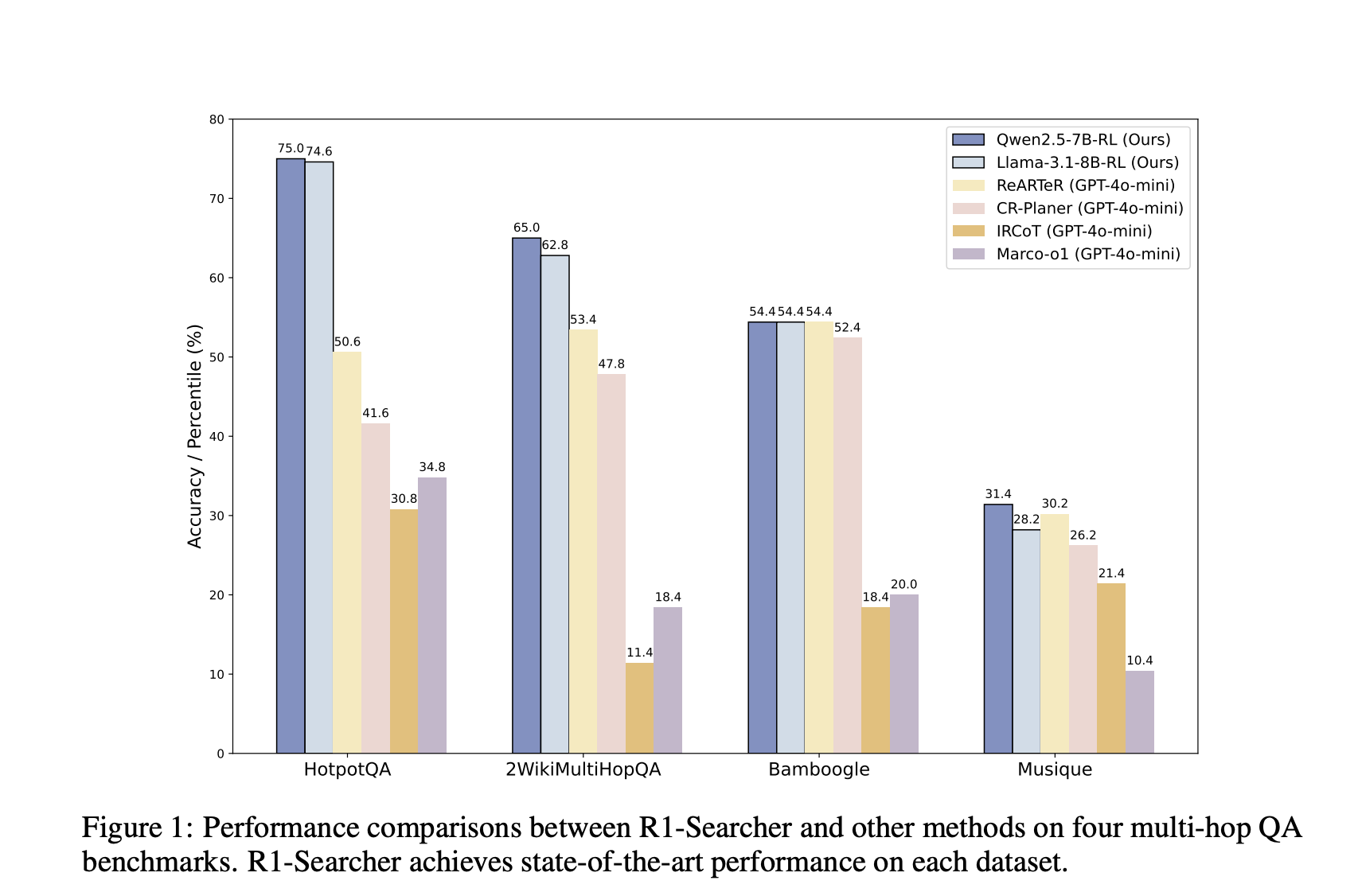
Improving Large Language Models with R1-Searcher
Large language models (LLMs) rely heavily on their internal knowledge, which often falls short when faced with real-time or complex inquiries. This shortcoming can lead to inaccurate responses or “hallucinations.” To address this issue, it is crucial to enhance LLMs with external search capabilities. Researchers are exploring reinforcement learning methods to improve these models’ ability to retrieve and integrate relevant information beyond their static knowledge base.
Challenges with Current LLMs
Current LLMs struggle with accessing up-to-date and domain-specific information, as they are trained on extensive datasets that may not encompass recent developments. This limitation affects their ability to respond to dynamic questions that require real-time data. Although retrieval-augmented generation (RAG) methods have been developed, they often depend on structured prompts and supervised fine-tuning (SFT), which can lead to overfitting and reduced generalization across various datasets.
Need for Autonomous Search Mechanisms
Previous attempts to integrate external search functionality into LLMs have included iterative prompting, SFT, and tree-based search techniques such as Monte Carlo Tree Search (MCTS). However, these methods tend to be resource-intensive and often rely on proprietary models. SFT, for instance, can force models to memorize specific reasoning paths, hindering their ability to generalize to new situations. There is a pressing need for a more autonomous and efficient search mechanism for LLMs.
Introduction to R1-Searcher
A research team from Renmin University of China and DataCanvas Alaya NeW has introduced R1-Searcher, a novel reinforcement learning framework that enhances LLMs’ ability to retrieve external knowledge effectively. This framework employs a two-stage reinforcement learning approach, allowing LLMs to interact with external search systems without requiring human-crafted prompts or prior SFT.
Structure of R1-Searcher
The R1-Searcher framework consists of two phases. In the first phase, the model is encouraged to initiate external search actions, receiving retrieval-based rewards without assessing the final answer’s correctness. This phase trains the model to perform search queries accurately. The second phase refines this ability by implementing an answer-based reward system that evaluates the relevance of the retrieved information in solving the problem at hand.
Experimental Results
Experimental evaluations have shown that R1-Searcher outperforms existing retrieval-augmented methods, including models based on GPT-4o-mini. For instance, accuracy improved by 48.22% on the HotpotQA dataset and by 21.72% on the 2WikiMultiHopQA dataset. Additionally, it demonstrated strong generalization capabilities, achieving an 11.4% improvement over similar retrieval-based methods on the Bamboogle dataset. Unlike prior techniques that depended on closed-source models and extensive computational resources, R1-Searcher offers superior performance while maintaining efficiency.
Conclusion
The findings suggest that enhancing LLMs with autonomous search capabilities can significantly boost their accuracy and generalization. By utilizing reinforcement learning rather than SFT, R1-Searcher empowers models to learn optimal retrieval strategies dynamically. This approach marks a significant advancement in artificial intelligence, addressing current model limitations while ensuring adaptability to evolving knowledge demands.
Additional Resources
For more information, check out the Paper and GitHub Page. All credit for this research goes to the project researchers. You can also follow us on Twitter and join our 80k+ ML SubReddit.
Transform Your Business with AI
Explore how AI technology can enhance your work processes. Identify areas where AI can add value, automate tasks, and determine key performance indicators (KPIs) to measure the impact of your AI investments. Start with small projects, collect data on their effectiveness, and gradually expand AI use in your operations.
If you need assistance with AI in business, contact us at hello@itinai.ru. Connect with us on Telegram, X, and LinkedIn.


























